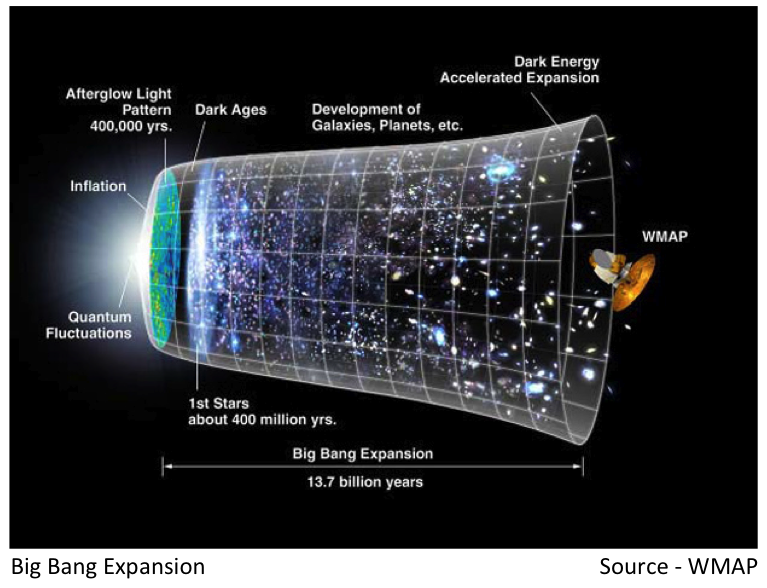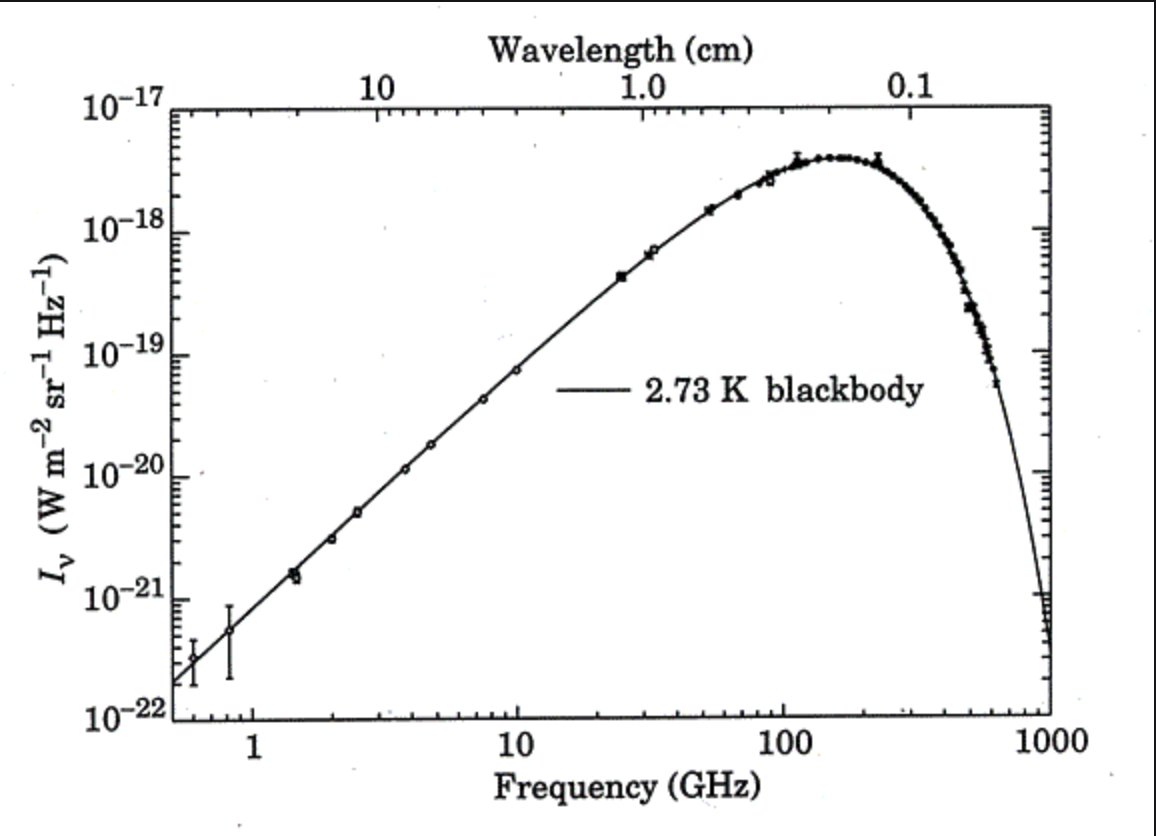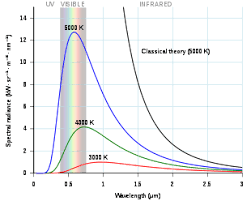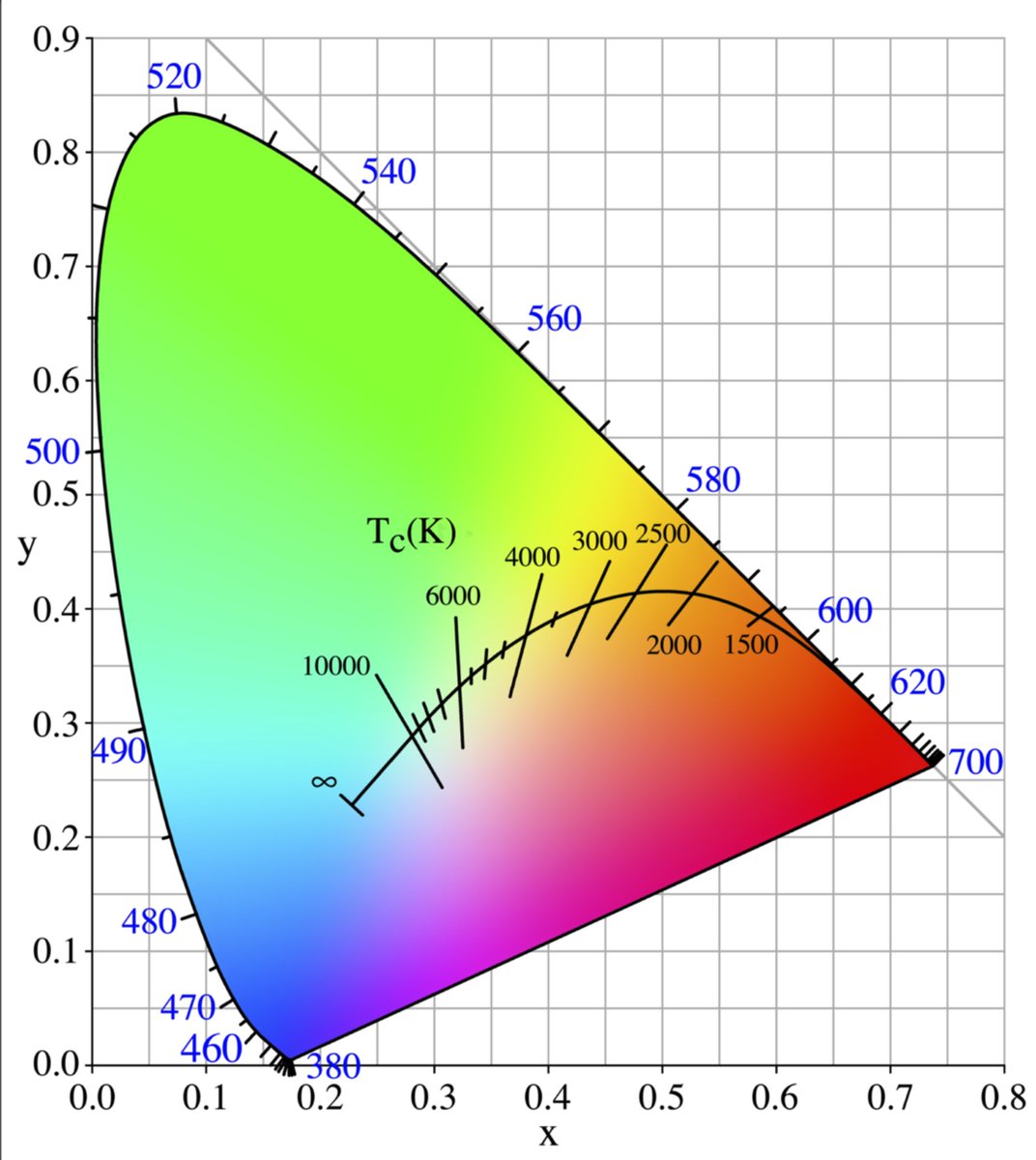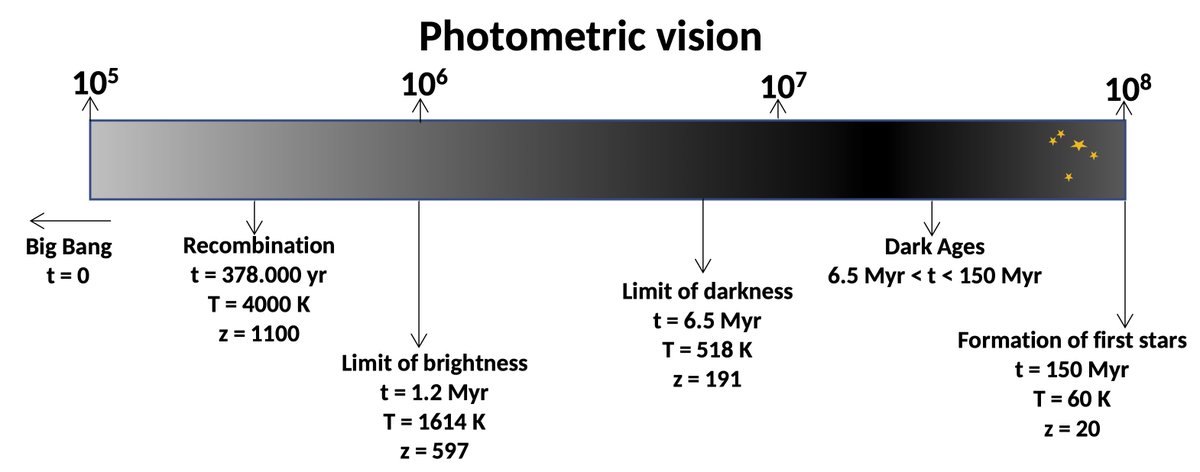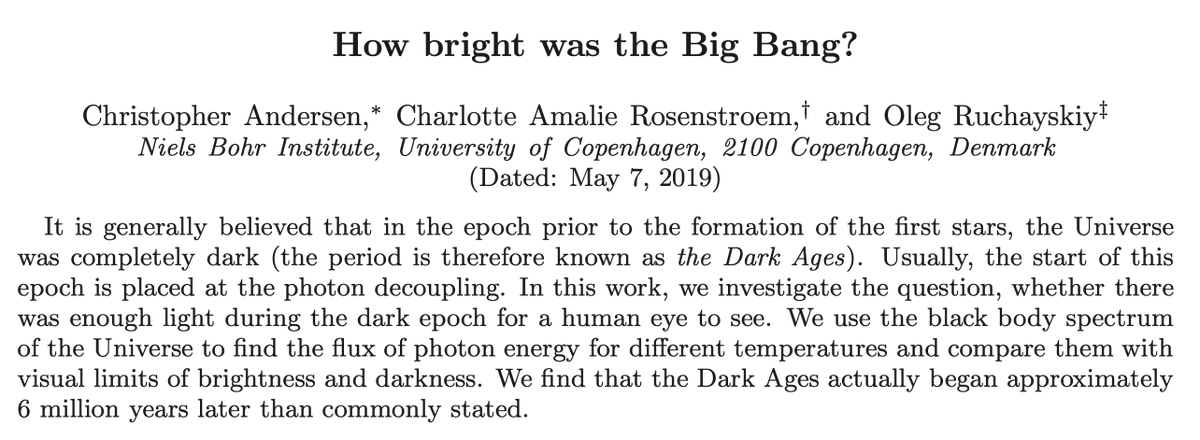Did you know that there was a time when the universe was blue?
But if you were there, you would not be able to see it.
Let’s try and understand why. In the early stages of the universe, it was a soup of hot radiation and particles. For the first 50,000 years ...
But if you were there, you would not be able to see it.
Let’s try and understand why. In the early stages of the universe, it was a soup of hot radiation and particles. For the first 50,000 years ...
… radiation dominated, but as the universe expanded and cooled, matter influenced expansion. At about 400,000 years, matter and radiation went their separate ways (they decoupled).
The radiation continued to cool as the universe expanded, and we see it today at 2.7K …
The radiation continued to cool as the universe expanded, and we see it today at 2.7K …
This “cosmic microwave background” is an important probe of cosmology. But it has one interesting property - it is the most perfect “blackbody” we know.
The mathematics of this emission was calculated by Planck in 1900 at the birth of quantum mechanics …
The mathematics of this emission was calculated by Planck in 1900 at the birth of quantum mechanics …
… this showed that matter and radiation were perfectly coupled before 400,000 years.
The function depends on one variable, the temperature T, and as the universe cooled, it retained the blackbody shape of the background radiation.
The function depends on one variable, the temperature T, and as the universe cooled, it retained the blackbody shape of the background radiation.
There must have been a time when the universe was hot enough for the black body radiation was in the visible range, so your eye could see it! Here’s the colour of the CMB as a function of temperature.
At the point of decoupling, the temperature was about 4000K, which is cooler than the Sun. But the universe was a complex fog before this point, so let’s look at afterwards.
The sky would me a nice white-ash orange colour. So, not blue. But still lovely. But not so fast….
The sky would me a nice white-ash orange colour. So, not blue. But still lovely. But not so fast….
The entire sky would have the surface brightness the same as a star which is 4000K.
Imagine the entire sky with the brightness of the Sun! You would have to squint!
Imagine the entire sky with the brightness of the Sun! You would have to squint!
So, this paper calculates just when you would be able to see without factor 100 sunglasses.
Turns out you have to wait until the universe is 1.2 million years old, with a temperature of 1614K.
When you are able to open your eyes, the sky would be still quite bright, but ..
Turns out you have to wait until the universe is 1.2 million years old, with a temperature of 1614K.
When you are able to open your eyes, the sky would be still quite bright, but ..
… a lovely orange-red colour.
It will continue to fade and reader for about 5 million years, cooling to just over 500K before it becomes too faint to see. Then the universe would be truely dark until the first stars.
Paper: https://arxiv.org/pdf/1801.03278.pdf
It will continue to fade and reader for about 5 million years, cooling to just over 500K before it becomes too faint to see. Then the universe would be truely dark until the first stars.
Paper: https://arxiv.org/pdf/1801.03278.pdf

 Read on Twitter
Read on Twitter